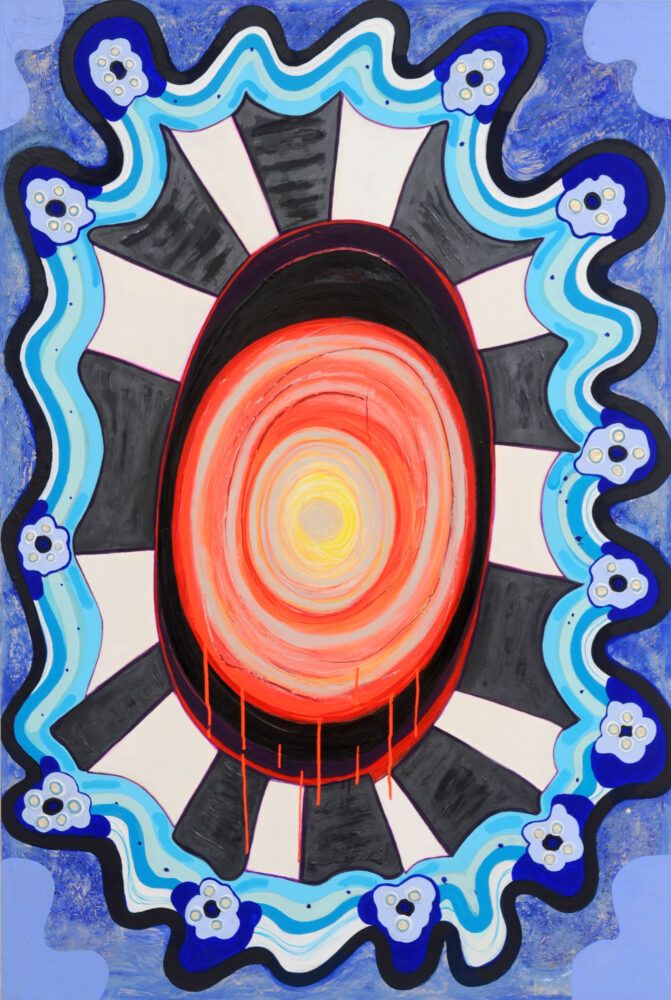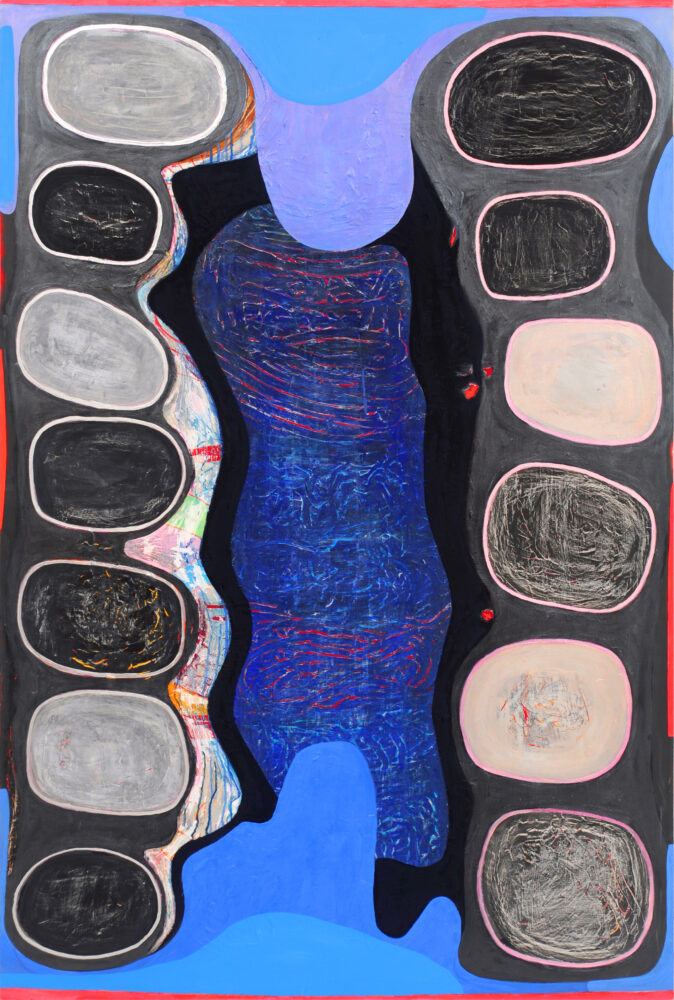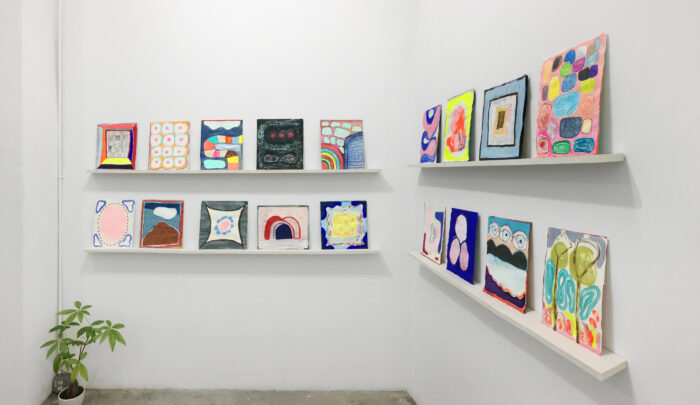
Theresa Hackett: Around the Bend at High Noon Gallery
April 8 – May 16, 2021
All images courtesy of High Noon Gallery
Theresa Hackett’s large (72 by 48 inches), double-sided mixed-media paintings are free-spirited treatments of extended designs (all were made in 2020-2021). They remind us of visual details in Calder’s circus, a major influence on the works. Hanging from the ceiling, the metal panels create a crisscrossing path within the small space; in the backspace, shelves hold 11 by 10-inch paper works that involve imagery similar to the larger works of art. Hackett’s style is freely given, in the manner of earlier modernism. Something brash and beautiful occurs in her work. It might best be described as a celebratory manner of speaking. There is little to worry about or lament in these paintings, which expand outward with joyous energy. The patterns possess numerous elements, and they are forthright and direct in their determination to please. It is an art not determined by introspection but by open disclosure.

The large works abound in energetic assertion. Their effects are numerous: pattern details: spirals, a primal form over centuries and across cultures, figure regularly in the work. Supernatural Flashback (side B) features a tightly wound, bright red spiral on the upper right, with a curving stripe, outlined in thin red lines, separating boulder-like imagery on the lower left. The title suggests a specific memory animating the composition, but we don’t know the details. We do know from the painting’s name that something otherworldly is involved. To tie Hackett’s imagery to realism is usually difficult; her art is successful primarily by virtue of its nonobjective flair. Hypnotized (side B) looks like a mirror, surrounded by a light-blue frame, its short curves punctuated by dots within circles. The center, though, is abstract; it consists of a reddish and pinkish spiral, swirling as if to hypnotize the viewer. Its center is close to a circle containing yellow painterly gestures. Broad black-and-white stripes push outward from the ovals toward the frame. The painting holds a balance between recognizable and abstract imagery.


Hiding in the Shadows (Side A) is a particularly attractive example of Hackett’s work. It consists of a moderately thick, gray strip on the right and left edges of the mixed-media painting; Black and white boulder shapes fill the columns, outlined in white or sometimes in very light pink. We find a deep blue stripe in the middle, its wavy edges emphasized by black strips on either side. Rounded, lighter blue forms occur on the top and bottom of this detail. In this piece, we might remember the work of the American modernist Arthur Dove, who worked with simple, but artfully developed, abstraction. But Hackett is an artist of this moment, being given to patterns describing a near ecstasy that cannot be easily aligned with specific objects. We are meant to look on and enjoy, much in the way we do when we see the film of Calder animating his circus.

72” x 48”
Hiding in the Shadows (Side B) offers more complex imagery: four rows of egg shapes on top of a white cloud, edged on the far sides and corners by a light blue. The eggs are filled with abstract effects–dark lines; and triangles, rectangles, and amorphous shapes filled with color and regularly surrounded by empty, but shaped space determined by the stripes within. The contents of these eggs seem to reference modernism; no artist today makes work without precedents. Hackett, who relies on her intuition more than anything else, is someone unusual in today’s practice: a painter in love with her task, presenting imagery intended to enchant rather than edify.


Great show!
Must see. Go now. Closing soon. If lucky, the artist will be there to enchant and to edify.
Great visual cues for Terri’s work: Freely given, brash and beautiful, Intuition and a painter in love with her task. You emphasize the generosity of the work. Nice.